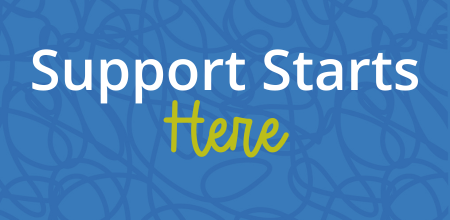Be an Advocate: It’s Your Job!
Categories: Professionals, Public Policy
Five Steps to Help You Be the Best Advocate Possible for Those You Serve
By Julie Fidler Dixon, M.S., CRC, CCM, CBIS
Understanding the complexities of securing funding and other resources for individuals living with brain injury can be difficult and complicated. Even if it’s not your specific job to do so, if you work in this field, you have an ethical obligation to help survivors by advocating for them whenever you can – with funders, physicians, DME providers, schools, other agencies, legislators, etc. So whether you are a social worker seeking authorization for services, a therapist needing approval for a piece of equipment, a nurse asking for a special treatment, or a public citizen talking with a legislator, here are five things that can enhance your success:
- Get the right mindset. Have confidence in the fact that you probably know more about this field than the person(s) you will be talking to and that you almost certainly know the survivor in question better. Relax, you won’t be conversing with a huge institutional company or the whole state legislature, you will be talking with an individual who is doing their job, just as you are. Believe in yourself and your mission.
- Prepare. Have a very firm idea of what you need to get from the conversation. Don’t try to wing it! Do your homework, research the process to help ensure that you are ready to make the request and have specific details about the situation available. Consider options that may be negotiable, along with alternative solutions. Write out questions you want to ask, points you want to make ahead of time.
- Be professional. Start the conversation in a cordial, pleasant fashion and quickly get to the points that you want to make. Don’t try to dominate the conversation or overwhelm the individual with information. Answer questions succinctly and ask if more information would be helpful. Always maintain your composure and don’t be afraid to ask clarifying questions. Remember that the person you are talking to may not be authorized to make such a decision or to do so at that point.
- Personalize the story. Set the tone for the conversation by describing the survivor(s) in a fashion that tells the story, just like an artist paints a picture. Fill in pertinent details, give examples and call the individual you are talking about by name. If appropriate and feasible, provide a picture, or even better, a video of the survivor demonstrating why the resource is needed to more fully engage the listener in the situation.
- Follow up. Regardless of the outcome, initiate contact to thank the individual, clarify next steps and/or appeal the decision. Recognize that many institutional processes are designed to eliminate extraneous or even legitimate requests. Often the first contact is not able to grant the request without further information, supervisory approval or an administrative exception.
Don’t give up unless you have exhausted all appeal options and, even then, if you still believe that the request is essential, seek other avenues for assistance such as the Brain Injury Association of America, a state agency, an attorney, other professionals, etc.
Always remember that no matter how successful you might be in securing resources for a brain injury survivor, you and your organization are likely only a pitstop on the way to a lifetime of challenges. You owe it the survivor and his or her family support system to help them learn how to advocate and educate successfully, so share what you know!
About the Author:
Julie Fidler Dixon is the retired CEO of On With Life, a not-for-profit organization with an extensive continuum of brain injury rehabilitation services. She is a CARF surveyor and has more than 45 years of rehabilitation experience. She was a member of the first class in the world to earn a master’s degree in Rehabilitation Job Placement and Job Development for the Severely Disabled. Julie is a member of the Brain Injury Association of America’s Board of Directors.

